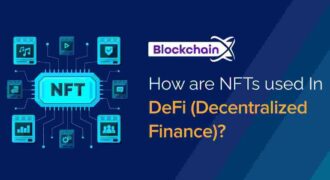Stablecoins have emerged as a cornerstone of the cryptocurrency ecosystem, bridging the gap between volatile digital assets and traditional fiat currencies. By pegging their value to stable assets like the US dollar or other fiat currencies, stablecoins provide price stability, liquidity, and a medium of exchange in the crypto market. However, recent developments, fluctuations, and regulatory scrutiny have highlighted that stablecoins are not immune to risks, and their stability can significantly influence the broader crypto market.
For investors, traders, and enthusiasts, staying informed about stablecoin updates, peg fluctuations, and market impacts is critical to navigating today’s dynamic cryptocurrency environment.
Understanding Stablecoins
Stablecoins are cryptocurrencies designed to maintain a stable value relative to a reference asset, most commonly fiat currencies such as the USD. They come in several forms:
- Fiat-Collateralized Stablecoins
These are backed by fiat reserves held in banks or custodial accounts. Examples include USDT (Tether) and USDC (USD Coin). Their value is generally maintained 1:1 with the US dollar. - Crypto-Collateralized Stablecoins
Backed by other cryptocurrencies, these stablecoins use over-collateralization to account for volatility. DAI, for instance, is pegged to USD but backed by Ethereum and other crypto assets. - Algorithmic Stablecoins
Instead of backing with assets, these stablecoins rely on algorithmic mechanisms to maintain their peg. The supply is automatically adjusted based on market demand to stabilize the price. Examples include TerraUSD (UST) before its collapse, which underscored the risks of algorithmic models.
Stablecoins serve as on-ramps to crypto markets, collateral for DeFi platforms, and settlement assets for exchanges, making their stability critical to the ecosystem.
Peg Stability: Why It Matters
The core appeal of stablecoins lies in their price stability, providing a predictable value in an otherwise volatile market. Peg stability is important for several reasons:
- Trading and Hedging: Traders rely on stablecoins as a safe haven during market volatility, using them to hedge positions in Bitcoin, Ethereum, or altcoins.
- DeFi Functionality: Lending, borrowing, and yield farming depend on stablecoins as collateral. Peg deviations can trigger liquidations and systemic risk.
- Cross-Border Payments: Businesses and individuals use stablecoins for fast, low-cost international transfers, and any fluctuation can affect their utility.
- Market Confidence: Stablecoins underpin liquidity on exchanges and DeFi platforms. Peg instability can reduce confidence and trigger broader market disruptions.
Maintaining a stable peg requires adequate reserves, robust governance, and algorithmic precision, all of which are closely monitored by investors and regulators alike.
Recent Stablecoin Developments
Recent events have highlighted the importance of stablecoin updates and market monitoring:
- USDT and USDC Reserve Audits
Leading fiat-backed stablecoins like Tether (USDT) and USD Coin (USDC) have increasingly undergone audits and transparency reports to reassure investors that reserves fully back circulating tokens. These updates influence market confidence and adoption, as any doubt can lead to sell-offs or volatility. - Algorithmic Stablecoin Failures
The collapse of TerraUSD (UST) in 2022 demonstrated the fragility of algorithmic stablecoins during extreme market conditions. The incident emphasized that even peg mechanisms relying on market incentives can fail, triggering cascading effects across DeFi platforms and crypto markets. - Regulatory Scrutiny
Governments and financial authorities are now scrutinizing stablecoins more closely, particularly those widely used for payments and trading. Regulatory updates—such as proposed reserve requirements or oversight frameworks—can impact adoption, token issuance, and investor trust. - Integration in DeFi and CeFi Platforms
Stablecoins continue to expand in usage across Decentralized Finance (DeFi) and Centralized Finance (CeFi) ecosystems. Platforms are introducing new yield products, cross-chain swaps, and collateralized lending using stablecoins, which enhances their utility but also increases systemic exposure if a peg fails.
Market Repercussions of Peg Instability
Even slight deviations from the intended peg can have significant market consequences:
- Trading Volatility: Traders may experience rapid fluctuations in stablecoin value, affecting leveraged positions and liquidity pools.
- DeFi Liquidations: Stablecoins serve as collateral; peg instability can trigger automated liquidations, cascading losses across protocols.
- Investor Confidence: Uncertainty around peg stability can lead to sell-offs not only in stablecoins but also in associated cryptocurrencies.
- Exchange Liquidity Impact: Exchanges rely on stablecoins for settlements. Peg deviations can disrupt order matching and liquidity provision, affecting trading activity.
Historically, even minor peg deviations have prompted rapid market reactions, emphasizing the intertwined nature of stablecoins with the broader crypto ecosystem.
Strategies for Investors Around Stablecoin Updates
Investors can adopt several strategies to navigate stablecoin developments and peg risks:
- Diversification Across Stablecoins
Holding multiple stablecoins (e.g., USDT, USDC, DAI) can mitigate exposure to any single token’s peg issues or regulatory challenges. - Monitoring Reserve Transparency
Stay informed about audits and transparency reports for fiat-backed stablecoins. Trustworthy reserves reduce systemic risk and enhance confidence. - Hedging with Crypto Collateral
Some investors combine stablecoins with crypto hedges or derivatives to protect against unexpected peg deviations in volatile markets. - Staying Updated on Regulatory Changes
As governments introduce frameworks for stablecoins, keeping abreast of compliance requirements and market implications can prevent sudden exposure to risk. - Cautious Engagement with Algorithmic Stablecoins
Algorithmic models can fail under stress. Investors should carefully assess risk parameters, collateralization mechanisms, and historical performance before allocating capital.
Future Outlook
The role of stablecoins in cryptocurrency markets will likely continue to expand, driven by factors such as:
- Increasing Institutional Adoption: Stablecoins are becoming integral to trading desks, remittances, and corporate payments, increasing their systemic importance.
- Cross-Chain Expansion: Multi-chain support for stablecoins enhances utility but requires robust monitoring and interoperability solutions to maintain peg integrity.
- Regulatory Evolution: Governments are likely to implement clearer frameworks, potentially introducing greater stability, oversight, and trust.
- DeFi and CeFi Integration: Growing use in lending, staking, and yield farming continues to strengthen stablecoin demand, reinforcing their critical role in liquidity provision.
Investors and market participants who stay informed about updates, risk factors, and regulatory developments will be better positioned to navigate stablecoin markets effectively.
Conclusion
Stablecoins are more than just digital currencies—they are the bedrock of liquidity, trading efficiency, and stability in the cryptocurrency ecosystem. Peg stability, reserve transparency, and technological innovations determine their utility, adoption, and market influence.
Recent developments—from reserve audits and algorithmic failures to regulatory scrutiny—highlight the delicate balance required to maintain stablecoin credibility. Investors must understand these dynamics to protect capital, optimize trading strategies, and anticipate market repercussions.
In the ever-evolving crypto landscape, stablecoins serve as both a safe harbor and a market indicator. By monitoring updates and peg stability closely, investors can capitalize on opportunities while mitigating potential risks, ensuring they remain confident and proactive in a market where stability is a valuable commodity.










